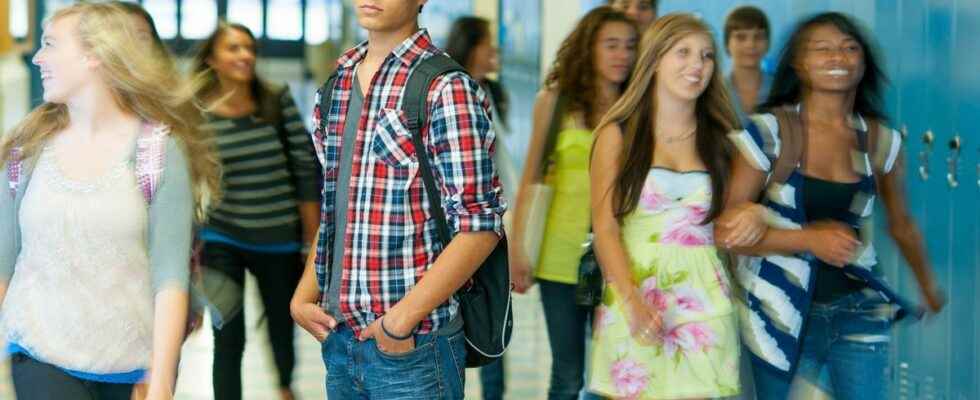Published on 05/13/2022 at 10:26 a.m.,
Reading 2 mins.
in collaboration with
Sabrina Philippe (Psychologist)
Popular children and adolescents at school are more often aggressive or disruptive. But being popular doesn’t necessarily mean having a lot of friends…
Being known and loved by the greatest number is not without risk. Among some schoolchildren, popularity would lead to a “aggressive and disruptive behavior” according to American researchers from Florida Atlantic University.
Popular and dominant schoolchildren
Would the conflict amplify aggressive behavior? It is in an attempt to resolve this hypothesis that a group of scientists conducted the investigation.
To do this, they recruited and observed the behavior of 356 students (181 girls, 172 boys) – aged 8 to 12 – and schooled in Florida.
Following various tests and observations, the researchers realized that the higher levels of aggressiveness and disturbance “were associated with an increase in popularity, especially among children who are regularly in conflict with their classmates”.
“Popularity is important for children and teenagers. Some believe that being popular is more important than having friends, as popularity is a marker of prestige, dominance and social status“, said the scientists.
Thus, disagreements with an aggressive child or children carry an implicit threat of harm, according to the authors. In order not to be in conflict, the other students are likely to submit, which increases the position of the dominant and the dominated.
“A similar process seems to work for disruptive children, although less pronounced. Submission in response to a disagreement with a disruptive child avoids irritating classmates who are aware of the risks of alienating someone who is willing to destabilize the group to achieve his ends“, says Brett Laursen, the main author.
“Leaders are often the troublemakers, because they are the ones who challenge authority, who impose themselves. They must show that nothing scares them: neither other children nor adults“, adds Dr. Sabrina Philippe, psychologist and member of the committee of experts of Doctissimo.
Distinguishing what is of the order of “disturbance” or “aggressiveness” is however necessary: some children can defy the teacher to show others their strength, but are not aggressive for all that.
Nudges, pinches, shoves… Aggression is plural but common among young children. It is often the reflection of a frustration:
“Aggressiveness is always the sign of a bad being. It is a response to physical or psychological aggression. Why does this child feel attacked? That’s the question you have to ask yourself to try to understand what’s going on.”says Dr. Sabrina Philippe, before adding “that at school, the child who develops aggressiveness may feel wronged, this is a sign of anger, frustration towards his classmates or his teachers”.
The best way to reduce this type of behavior is prevention. Some practical advice can be applied in this direction on a daily basis:
- Talk to children, listen to them;
- Praise children for their positive behavior;
- Resolve conflicts as soon as they arise;
- Resolve small conflicts before they escalate;
- Become familiar with the factors that trigger aggressive behavior (poor social skills, mental health problems, etc.);
- Know how to recognize the situations that lead a child to externalize his aggressiveness, and try to eliminate them or attenuate their effects;
- Helping children and adolescents learn the skills needed to avoid outbursts of aggression.
